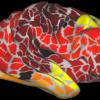News and Press Releases
Dec 9 2015 | Stanford News
Stanford psychologist's 18-month study of his own brain reveals new relations between brain and body
Russell Poldrack scanned his brain to create the most detailed map of brain connectivity ever. In the process, he and his colleagues revealed strong correlations between brain function and gene expression, and how the brain reorganizes itself when running low on caffeine.
Dec 7 2015 | Stanford Medicine - News Center
Short-circuiting the need for expensive clinical trials, researchers uncovered an association between androgen blockers and cognitive decline by examining patient medical records.
Dec 4 2015 | NeuroTalk S5E8: Nils Brose
NeuWrite West talks with Nils Brose, Professor and Director of the Dept. of Molecular Biology at the Max Planck Institute of Experimental Medicine in Göttingen, Germany.
Dec 3 2015 | Stanford Medicine - News Center
Stanford researchers are using the African turquoise killifish as a model to study longevity and have provided its genetic information as a resource for the research community.
Nov 24 2015 | Stanford News
Stanford psychologist Jeanne Tsai found different cultures value different positive facial expressions, and that these differences arise in deep brain circuits that can predict who people like and dislike.
Nov 23 2015 | Stanford Medicine - News Center
Eight faculty members from the School of Medicine and one from the School of Humanities and Sciences have been elected fellows of the American Association for the Advancement of Science.
Nov 23 2015 | NeuWrite West
Have you gotten your flu shot yet? Staying healthy this flu season may do more than just save you a few days of work - it may help protect the development of babies’ brains.
Nov 19 2015 | Stanford Medicine - News Center
“When we don’t understand how our brains work, we blame ourselves for not following through,” says behavior-change expert Kyra Bobinet, MD, MPH. As the CEO-founder of engagedIN.
Nov 18 2015 | Stanford Medicine - News Center
Pioglitazone, available generically for treating Type 2 diabetes, improved symptoms of long-term depression in patients also suffering from insulin resistance.
Nov 18 2015 | NeuWrite West
A big debate remains in the field: are these circRNAs just byproducts of a less common chemical reaction or are they produced for some specific cellular function?













